Toyota Hybrids come in all shapes and sizes
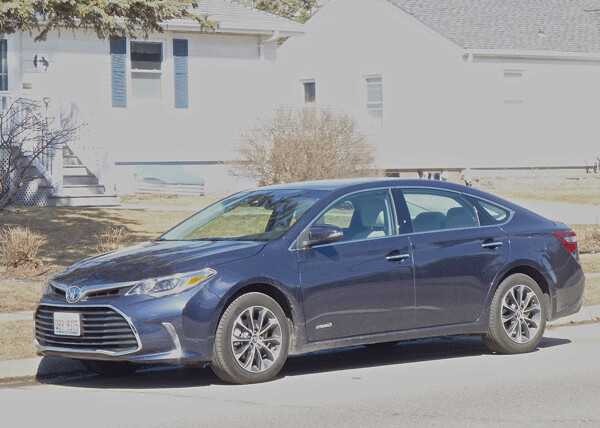
The word “hybrid” might almost be considered as the second half of a hyphenated phrase, with the first word, of course, being “Toyota.”
Other companies make hybrids, and some are excellent and break down barriers of new technology in the world of combining gasoline engines and electric motors. But Toyota with its Prius has established such a beachhead that some observers claim the Prius is Toyota’s new signature vehicle, replacing the ubiquitous Camry, and the RAV4 as the vehicle that best-defines Toyota.
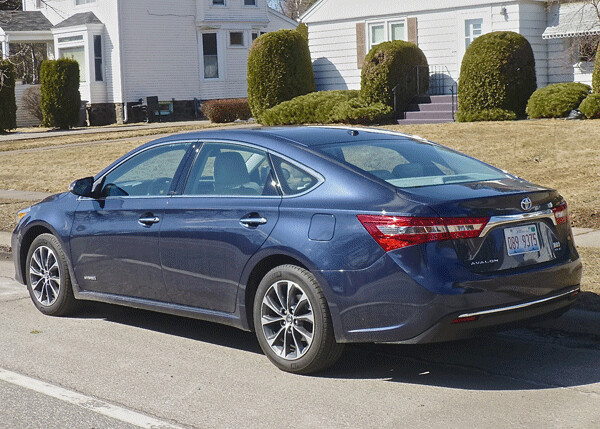
But Toyota is hardly sitting still. Virtually everything the company makes has a hybrid version these days, from compacts to SUVs. I recently had the chance to test drive two Toyota hybrids, and they are so different it seemed that combining them would describe the scope of Toyota’s hybrid reach.
First is the Toyota Avalon Hybrid, which takes Toyota’s unique luxury sedan and inserts its Hybrid Synergy Drive. At $39,789, we know that this is nobody’s Prius, because the compact Prius models — and there are three of them, these days — are all priced between $20,000 and $30,000.
The Avalon began life back in the days when Toyota had expanded to form the Lexus luxury line, and the basic Lexus ES was basically a Camry all gussied up with fancy equipment as an entry-luxury level car. The first Avalon was pretty much the same thing, which prompted me to ask a Toyota executive why Toyota would build the Avalon, when it was so similar to the Lexus ES.
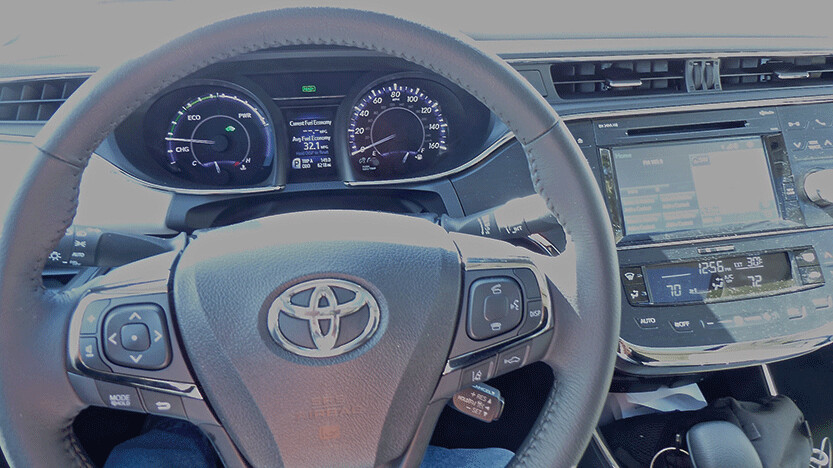
The explanation made perfect sense. A lot of loyal Toyota buyers love their cars, but as they move up in station, they think buying a Lexus is pretentious, he said. So building the Avalon means those buyers can get their luxury and stay in the Toyota family.
A year ago, Toyota put a new body on the Avalon and made it much more than a fancy Camry. In fact, it gave Avalon the new stuff before Camry got it. Going to the hybrid model was a giant step, in a couple of ways. First, the styling calls for a larger and more dramatic lower grille, under the front bumper. The design is engineering oriented, but the stylists had to be excited, because the hybrid looks like the sporty Avalon.
When it came out, I declared that the Avalon was the best-looking sedan Toyota had ever made, and I stand by that claim. The Avalon Hybrid just looks a tad better. Inside, it has all the luxury features any Lexus buyer might appreciate, and there is good reason the car performs and handles in a sportier fashion.
The regular Avalon comes with a 3.5-liter V6, while the Hybrid comes with a 2.5-liter 4-cylinder and the battery-pack system with electric motors, boosting total power to 200 horsepower, running through front-wheel drive. With revised suspension, the Avalon Hybrid corners well and handles, overall, like a sports sedan wearing luxury-car equipment.
Included are all the latest safety and comfort features, like pre-collision and pedestrian detection, lane departure alert with steering assist, dynamic radar cruise control, automatic high beams, rear-view camera, electronic brake distribution and smart-stop technology. Leather interior appointments and a 7-inch touch-screen, plus all the connectivity available, fill out the reasons for the Avalon Hybrid’s price tag.
At that, it is a bargain, because with all the safety features the Avalon Hybrid at just under $40,000 delivers all the comfort you could want front and rear, plus 40 miles per gallon in town and 39 on the highway.
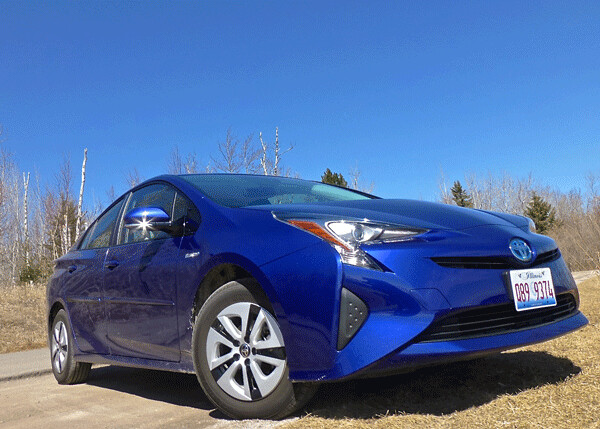
The Prius line is where you go to find fuel economy, of course. The new Prius line is just that — a line. There are three models, the basic Prius, then the Prius C, and the Prius V. The model I test drove was the Prius Two Eco, which is a trim level that comes equipped to get optimum fuel economy. It has a larger battery pack, an 8.8 kW-hr lithium-ion battery compared to the heavier nickel-metal-hydride battery that was traditional in Prius models. A plug-in variation is also available.
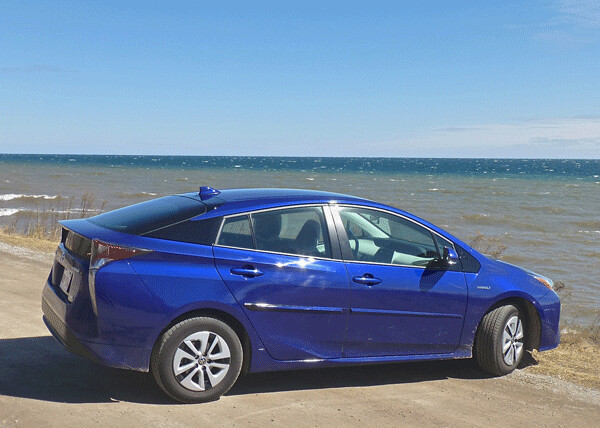
The Prius takes Toyota’s 1.8-liter 4-cylinder and adds the electric complement for Toyota Synergy Drive. In that system, the power from the gasoline engine augments the electric motor power from the battery pack, and, in fact, comes on whenever the battery runs down, or when stepping harder on the gas demands maximum power. The gas engine’s power, curiously enough, powers the generator which operates the wheels, meaning that the gas engine alone will not move the car.
In all, the gas-electric combination offers 121 horsepower with — like the Avalon Hybrid — a CVT (continuously variable transmission) making the front wheels go.
While the Prius has an all-new look from a stylish redesign for 2017, it is priced at $26,544, and offers 58 miles per gallon in city driving, and 53 on the highway. The reason is that Toyota’s hybrid system works more efficiently in the stop and go driving in town than it does at sustained highway speed.
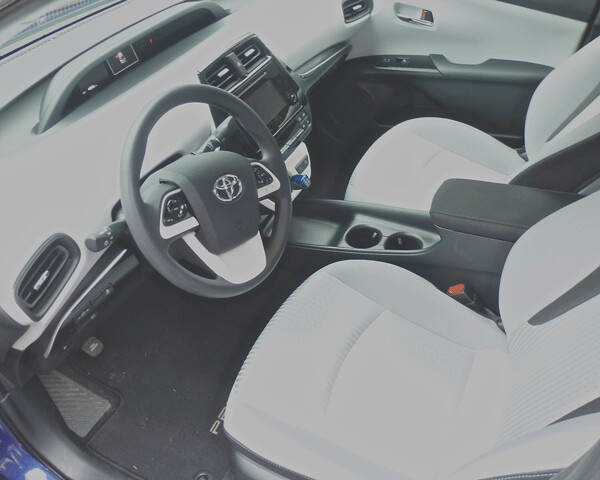
Naturally, the Prius doesn’t approach the Avalon’s luxury and comfort, but it offers a neat interior with instruments that let you trace your fuel-efficiency, and the seats are comfortable and supportive. Handling is good, and the electric power boost gives the Prius surprisingly good acceleration, even with the CVT.
The Bluetooth and other connectivity equipment is all in place, and enough of the costlier car’s features are installed on the Prius to make it well worth the sticker price. And the new model looks like a costlier alternative.
In the Prius line, the more compact Prius C, the smallest member of the Prius family with a smaller 1.5-liter 4-cylinder, starting at a mere $21,000. The Prius V is longer and taller, almost like a wagon version, with a higher price tag closer to $30,000, and more power from the 1.8 and its battery unit, but its fuel economy drops to about 43 by EPA estimate for carrying the extra weight, and, presumably, extra cargo.
My pick is still the redesigned Prius Eco, and while it might surprise with its fun-to-drive approach while delivering its 58 mpg, it might make the perfect combination for an aspiring suburban family, because it would look good parked in that driveway just next to the Avalon. Lexus owners would be envious.
